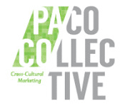The New American Upscale & Luxury Consumer PART I [INFOGRAPHIC]
 100% of America’s Upscale consumers’ growth between 2011 and 2014 came from Multicultural Upscale HHs whereas White Non-Hispanic (WNH) Upscales declined.
100% of America’s Upscale consumers’ growth between 2011 and 2014 came from Multicultural Upscale HHs whereas White Non-Hispanic (WNH) Upscales declined.
 100% of America’s Upscale consumers’ growth between 2011 and 2014 came from Multicultural Upscale HHs whereas White Non-Hispanic (WNH) Upscales declined.
100% of America’s Upscale consumers’ growth between 2011 and 2014 came from Multicultural Upscale HHs whereas White Non-Hispanic (WNH) Upscales declined.
 NBC UNIVERSO announced the return of the network’s first original scripted series created for the U.S. Hispanic market, “El Vato” Season 2, starring regional Mexican singer, El Dasa during Upfront week.
NBC UNIVERSO announced the return of the network’s first original scripted series created for the U.S. Hispanic market, “El Vato” Season 2, starring regional Mexican singer, El Dasa during Upfront week.
![]() Few people would answer “yes” to this question—yet that’s the current state of package design at many consumer products companies.
Few people would answer “yes” to this question—yet that’s the current state of package design at many consumer products companies.
 The United States Tennis Association (USTA), the national governing body for the sport of tennis in the U.S. has partnered with LimeGreen Moroch to help strengthen its multicultural marketing initiatives.
The United States Tennis Association (USTA), the national governing body for the sport of tennis in the U.S. has partnered with LimeGreen Moroch to help strengthen its multicultural marketing initiatives.
![]() According to a recently released survey conducted by outsourced content marketing company Tempesta Media over 64 percent of digital agencies report that they are either stable or growing. In fact, digital agencies and PR firms paint a decidedly positive picture. Of the 50 percent of agencies reporting outright growth, the median growth rate was 26 percent. The accelerating commitment to content marketing is an important factor in building this confidence.
According to a recently released survey conducted by outsourced content marketing company Tempesta Media over 64 percent of digital agencies report that they are either stable or growing. In fact, digital agencies and PR firms paint a decidedly positive picture. Of the 50 percent of agencies reporting outright growth, the median growth rate was 26 percent. The accelerating commitment to content marketing is an important factor in building this confidence.
![]() The increasingly connected world we live in continues to drastically alter the relationship between brands and their customers. Arguably this change is most obvious in the growing expectation for always-on, real-time interactions across any device. More often, newer, disruptive entrants—not incumbent brands—are setting these new standards for customer expectations.
The increasingly connected world we live in continues to drastically alter the relationship between brands and their customers. Arguably this change is most obvious in the growing expectation for always-on, real-time interactions across any device. More often, newer, disruptive entrants—not incumbent brands—are setting these new standards for customer expectations.
 Extreme Reach is an enterprise software company that helps clients leverage video assets across linear TV and digital video. eMarketer’s Patricia Orsini spoke with Melinda McLaughlin, CMO of Extreme Reach, about how the company helps clients make sense of and use technology to ensure their ads reach consumers in the most targeted and efficient way.
Extreme Reach is an enterprise software company that helps clients leverage video assets across linear TV and digital video. eMarketer’s Patricia Orsini spoke with Melinda McLaughlin, CMO of Extreme Reach, about how the company helps clients make sense of and use technology to ensure their ads reach consumers in the most targeted and efficient way.
![]() How can the importance of social media in Millennials and teens’ lives be stated?
How can the importance of social media in Millennials and teens’ lives be stated?
![]() What if I told you younger TV viewers would “never watch television” or “never going to get cable boxes”? You might ask: OK, what devices then– and how many?
What if I told you younger TV viewers would “never watch television” or “never going to get cable boxes”? You might ask: OK, what devices then– and how many?
 The official partnership will have a dedicated focus on Hispanic consumers primarily residing in the eastern United States.
The official partnership will have a dedicated focus on Hispanic consumers primarily residing in the eastern United States.
 Chicago based PACO Collectivecelebrated 10 years in business, evolving from a Hispanic-focused multicultural marketing agency, to a cross-cultural agency with major clients on its roster, including ComEd, the Chicago Bears and the Chicago White Sox, among others.
Chicago based PACO Collectivecelebrated 10 years in business, evolving from a Hispanic-focused multicultural marketing agency, to a cross-cultural agency with major clients on its roster, including ComEd, the Chicago Bears and the Chicago White Sox, among others.
 AIRE Radio Networks, a division of Spanish Broadcasting System, announced the appointments of Michelle Marino to Senior Vice President of Network Sales, and Erika Marrero to Vice President of Network Sales, reporting to Elisa Torres, Head of AIRE Radio Networks, effective immediately.
AIRE Radio Networks, a division of Spanish Broadcasting System, announced the appointments of Michelle Marino to Senior Vice President of Network Sales, and Erika Marrero to Vice President of Network Sales, reporting to Elisa Torres, Head of AIRE Radio Networks, effective immediately.
 Univision Communications Inc. (UCI) hosted its annual Upfront presentation on May 17th to unveil its 2016-17 programming line-up and highlight how UCI’s comprehensive portfolio.
Univision Communications Inc. (UCI) hosted its annual Upfront presentation on May 17th to unveil its 2016-17 programming line-up and highlight how UCI’s comprehensive portfolio.
 In conjunction with NBCUniversal’s Upfront presentation, TELEMUNDO and NBC UNIVERSO announced a robust lineup of new programming for the 2016-2017 season
In conjunction with NBCUniversal’s Upfront presentation, TELEMUNDO and NBC UNIVERSO announced a robust lineup of new programming for the 2016-2017 season
 beIN SPORTS announced upcoming programming plans, including enhanced broadcast strategies for both channels, beIN SPORTS and beIN SPORTS en Español, during its 2016 Upfront event.
beIN SPORTS announced upcoming programming plans, including enhanced broadcast strategies for both channels, beIN SPORTS and beIN SPORTS en Español, during its 2016 Upfront event.
 CNN en Español announced a new and enhanced lineup that continues to build on the network’s strategy of offering a multiplatform news network with fresh and original content, live breaking news programming, CNN Films and documentaries, CNN en Español Red Room, an interactive and social media space, and CNN en Marcha, a mobile interactive social media hub that travels to important venues all over the U.S.
CNN en Español announced a new and enhanced lineup that continues to build on the network’s strategy of offering a multiplatform news network with fresh and original content, live breaking news programming, CNN Films and documentaries, CNN en Español Red Room, an interactive and social media space, and CNN en Marcha, a mobile interactive social media hub that travels to important venues all over the U.S.
![]() Discovery U.S. Hispanic announced its networks’ 2016-2017 Upfront slate, expanding on popular genres such as adventure and motors for Discovery en Español as well as home and family on the female-focused Discovery Familia.
Discovery U.S. Hispanic announced its networks’ 2016-2017 Upfront slate, expanding on popular genres such as adventure and motors for Discovery en Español as well as home and family on the female-focused Discovery Familia.
![]() Many executives have come to feel that rapidly evolving brand and agency roles and responsibilities are having a negative impact on business results, creating a series of challenges.
Many executives have come to feel that rapidly evolving brand and agency roles and responsibilities are having a negative impact on business results, creating a series of challenges.
![]() The American middle class is losing ground in metropolitan areas across the country, affecting communities from Boston to Seattle and from Dallas to Milwaukee. From 2000 to 2014 the share of adults living in middle-income households fell in 203 of the 229 U.S. metropolitan areas examined in a new Pew Research Center analysis of government data.
The American middle class is losing ground in metropolitan areas across the country, affecting communities from Boston to Seattle and from Dallas to Milwaukee. From 2000 to 2014 the share of adults living in middle-income households fell in 203 of the 229 U.S. metropolitan areas examined in a new Pew Research Center analysis of government data.
![]() Packaging remains one of the most underleveraged marketing tools—despite the fact that, when done right, it can generate a significant lift in forecasted sales revenue.
Packaging remains one of the most underleveraged marketing tools—despite the fact that, when done right, it can generate a significant lift in forecasted sales revenue.